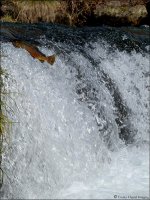Deuterium
Member
- Joined
- Jul 21, 2011
- Messages
- 122
I was fishing some pocket water for brook trout yesterday, the type of water where there are physical barriers that prevent the trout moving from one area of the stream to another and where there are significant differences in the habitat in the different stretches. Do you always release brookies back into the pool from which they came?






